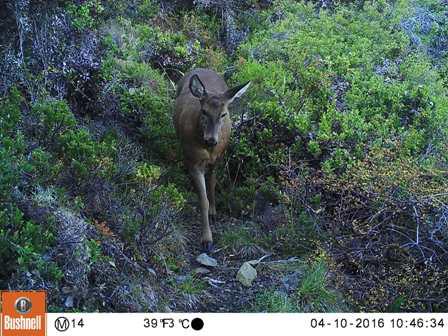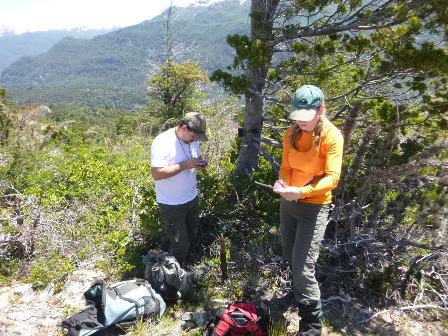Elizabeth Chang Reissig
Other projects
11 Nov 2007
Disease Risks for Native Deer Species, Associated to Exotic Ungulates Red Deer (Cervus elaphus) and Wild Boar (Sus scrofa) in Nahuel Huapi National Park, Northern Patagonia, Argentina
26 Jul 2010
Disease Risks for Native Deer Species, Associated to Exotic Ungulates Cervus elaphus and Sus scrofa in National Parks of Northern Patagonia, Argentina
The aim of this study is to assess the interaction between exotic and threatened native Patagonian ungulates, in relation to animal movement and disease transmission.

Huemul at study point camera trap in the Los Alerces National Park.
The risk of disease transmission from exotic to native species has not been extensively evaluated in Argentina where endangered and vulnerable species, such as huemul Hippocamelus bisulcus and pudu Pudu puda, are threatened by habitat loss, hunting and competition with exotic wild and domestic herbivores. It is known that many diseases can be transmitted by exotic species or domestic animals (feral and controlled) which are widely distributed and that are temporarily or permanently present in natural protected areas. The specific goals of this project are to evaluate the interface between exotic (cattle Bos taurus, red deer Cervus elaphus or wild boar Sus scrofa) and native ungulates (huemul and pudu) in relation to animal movement and frequency of interaction, analyze the prevalence of diseases, and estimate the effects that diseases might cause on threatened fauna in Patagonia Argentina.

The work is planning to achieve
(1) assessment of exotic animal movement to estimate areas of overlap with native deer;
(2) analysis of spatial interaction between exotic and native ungulates to determine contact rate and potential source of infection;
(3) evaluation of diseases in exotic wild and domestic animals distributed in protected areas which may reflects the exposure of pathogens that can infect native endangered ungulates and rural people.
This study will allow us to understand the wildlife and livestock interface in natural protected areas in Patagonia Argentina, such knowledge is key to establish health monitoring and surveillance system, which are essential for sustainable conservation management of threatened fauna. In addition, such conservation actions and recommendations supported by the results of this work can lead the improvement of livestock management inside National Parks through the detection of diseases of concern, or the selection of critical areas where is urge the reduction or total removal of exotic ungulates.